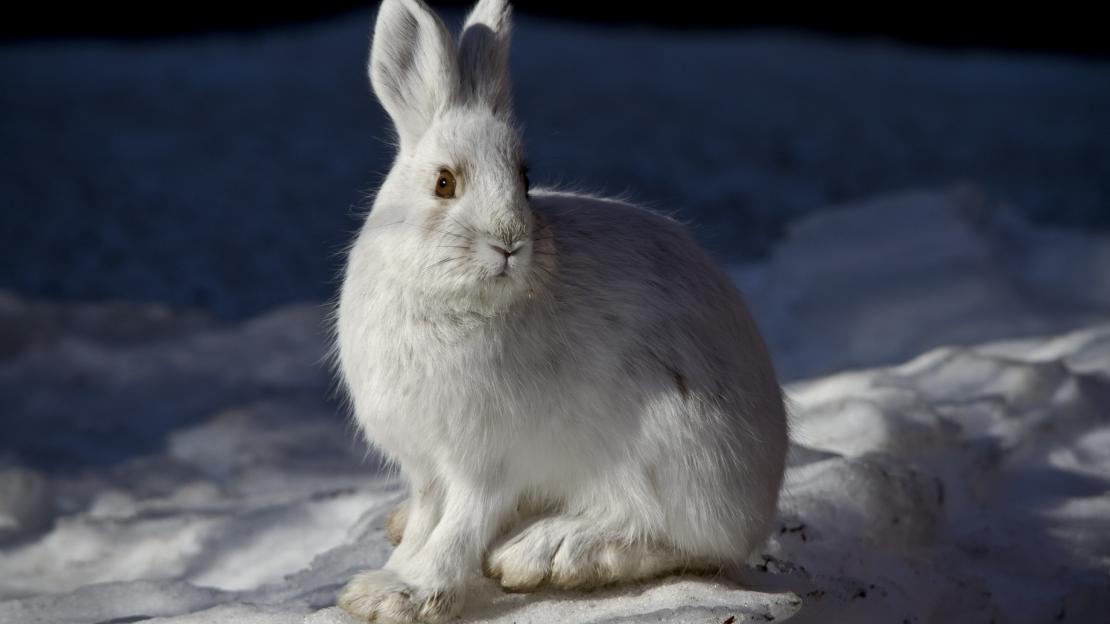Canadian Lynx, fox, coyote and various birds prey on them, while red squirrels and Arctic ground squirrels even kill their babies. Pretty much everything in the boreal forest is trying to eat a snowshoe hare.
It’s no wonder that such intense levels of predation can lead to stress. But what role does that stress play, especially in terms of baby hares inheriting certain traits from their stressed-out moms? It’s a question researchers at U of T Scarborough are looking into.
“Snowshoe hares follow a somewhat predictable 10-year population cycle. They’re constantly under threat by predators, so they make good candidates to study the indirect effects of stress,” says Rudy Boonstra, a professor of biology at U of T Scarborough.
Boonstra has been doing field research in Canada’s north for more than 40 years and helped co-author a comprehensive book on the boreal forest ecosystem, of which the snowshoe hare is a keystone species. In the early 1980s he started thinking about the role stress plays in natural environments, particularly its role in how ecosystems are organized.
“The evidence up until that point was that predators were calling the shots; once the hare population was abundant, predators were critical in driving down their numbers,” he says.
During the decline phase of the population cycle, which lasts about two to three years, pretty much every snowshoe hare dies at the “tooth or talon” of a predator, says Boonstra. So the question became whether the hares are smart enough to know that a predator was likely to kill them?
“If you look at the stress levels they’re experiencing, clearly, they do,” he says.
Not only do hares show signs of stress in their blood and energy levels, that stress also influences how they reproduce. Past research in Boonstra’s lab has found that stress experienced by mothers can be inherited by their offspring. What’s more, during periods of very high predation, which happens at the peak of the hare population cycle, the number of litters per summer begins to decline.
“You would think they would be breeding like mad since they’re being killed like mad, but in fact it’s the opposite,” he says. “The fear reduces reproduction.”
The long-term consequences of fear
It’s a question that is consuming Sophia Lavergne’s PhD research. Lavergne, who travels to the Kluane Lake Research Station in Yukon each year for two weeks during the winter and four months during the summer, is exploring the maternal effects of stress in pregnant snowshoe hares.
“We know a lot about stress in the lab and it’s always assumed to be negative, but a lot of this stress may be preparatory for the hares,” she says, adding that it may help offspring adapt for life in a harsh environment.
“It’s really important to test this in a natural system where there is a host of different stressors, like fluctuating temperatures, predators, food scarcity and other challenges in the environment.”
The research being done on the snowshoe hare can also easily be put into a human context, adds Boonstra.
“A pregnant mother during war time doesn’t know if she will survive, so she’s experiencing an enormous amount of anxiety,” he says. “We want to know whether that anxiety passes through the placenta, and if so, does it program the child in a certain way.”
Boonstra stresses the work being done in his lab is interested in generalities, and how their findings apply not just to snowshoe hares but all wild mammals and birds. They want to know if there are programming effects that somehow get encoded in hare offspring. In other words, do mothers during intense periods of high predation pass something on, and are the offspring fundamentally different than those whose mothers didn’t experience the same levels of stress.
Their working theory is that the programming involves epigenetics. Boonstra is part of a larger team affiliated with U of T Scarborough’s Centre for the Neurobiology of Stress and the Centre for Environmental Epigenetics and Development that looks at similar questions about how the brain and nervous system are affected by stress. Lavergne is also affiliated with Patrick McGowan’s epigenetics lab on campus.
It’s an ideal fit since epigenetics involves changes in gene function, that is, how genes are influenced by environmental triggers like toxins, stress, nutrition or infections. Boonstra says he’s is interested in seeing how general the phenomenon of the maternal effects of stress are in natural systems, but also how the programming works.
“The idea is that if this effect happens in snowshoe hares, it may also be at work in other organisms,” he says.
